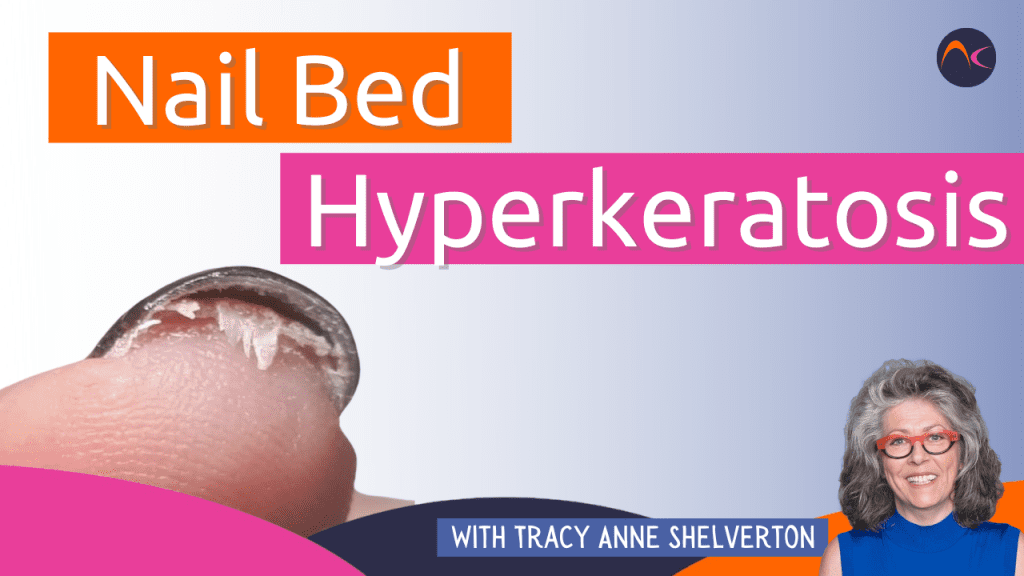Nail Bed Hyperkeratosis (or subungual hyperkeratosis) is the accumulation of scales under the nail plate, which is then detached and uplifted. The nail bed often appears thickened.
It is usually a reaction to something. In the nail industry, it can be caused by a primer, a bonder, monomer liquid, liquids used in combination with an acrygel, heat spikes, or an undercured product.
La queratinización que es la hiperqueratosis, es una reacción de defensa. Un poco como hacer de saco de arena cuando el agua empieza a inundar: El cuerpo hace todo lo que puede para asegurarse de que puede bloquear la irritación que causa la reacción la próxima vez.
La hiperqueratosis siempre provoca onicólisis. Therefore, it is wise to check the nail plate & behind the free edge when removing artificial nail products. The onychodermal band, although very strong, is also the assistant to our 4th guardian seal – the hiponiquio. Las células queratinizadas forzarán la hiponiquio open when they reach the free edge of the nail plate, which damages the nail bed epithelium, and then becomes a gateway for secondary infections. The bed epithelium will detach from the nail bed. This can result in slower nail plate movement and even more irritation.
With thousands of nerve receptors around the tips of our fingers, pain (caused by pressure between the nail plate and the nail bed) is inevitable when suffering from Nail Bed Hyperkeratosis. Topical pain relief can be very effective, but we have to remember that hyperkeratosis is time-consuming to resolve. Thankfully, there are new products on the market that help almost instantly. It would be smart to only use nail varnish during recovery.
Good quality nail & skin oil is essential, and infection prevention is key. It is easy to confuse nail bed hyperkeratosis with psoriasis, which can look similar but is not associated with the same causes. Remember if you are not sure, always refer your client to an MD! Ignoring Nail Bed Hyperkeratosis only extends the recovery time.
As nail professionals, we get in trouble with it because it doesn’t look pretty.
Reconocerlo, buscar al culpable y resolver el problema significa que nuestras clientas pueden volver a disfrutar antes de unas uñas bonitas (naturales o con mejoras).
Secretos para eliminar la hiperqueratosis del lecho ungueal
¿Está luchando contra la hiperqueratosis del lecho ungueal y busca soluciones eficaces? No busque más. Nuestro último artículo proporciona información valiosa sobre cómo solucionar este problema tan común en las uñas.
Hyperkeratosis, often triggered by solvents, primers, or uncured ingredients in artificial nail products, can be a pesky problem. But fear not, we’ve got you covered. Learn the essential steps to address hyperkeratosis, from cleansing your hands and nails with soap and water to using safe callous softeners and nourishing nail oils. Discover the secret to a speedy recovery, as well as how to identify and eliminate the root cause of this condition. Don’t miss out on this informative guide – click to read our blog on Hiperqueratosis del lecho ungueal ¡ahora y dé el primer paso hacia unas uñas más sanas!


